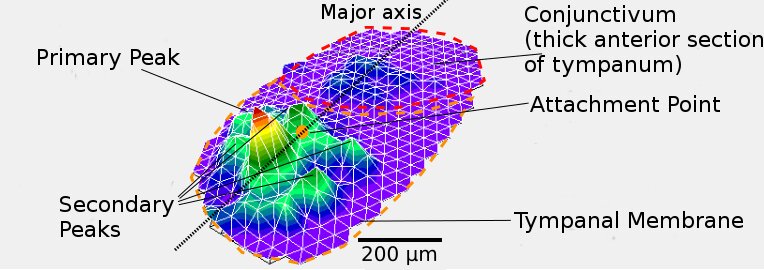Researchers from the University of Strathclyde in the United Kingdom have created a new type of microphone that can autonomously collect acoustic data while consuming low levels of power. Andrew Reid presented his work on “Unnatural Hearing—3D Printing Functional Polymers as a Path to Bio-Inspired Microphone Design” at the 184th Meeting of the Acoustical Society of America.
The team was inspired by insect ears and used 3D printing technology to create custom materials that mimic insect membranes. These synthetic membranes are highly sensitive and efficient acoustic sensors. Reid’s team believes that insect ears are ideal templates for lowering energy and data transmission costs, reducing the size of the sensors, and removing data processing.
The sensors are highly customizable, and without 3D printing, traditional silicon-based microphones lack the flexibility required to mimic the insect ear’s structure. The microphone’s mechanical element is a simple diaphragm in an unusual shape such as an ellipsoid or rectangular shape. The interesting parts of the microphone are on the microscale, with small variations in thickness and porosity, and on the nanoscale, with variations in material properties such as the compliance and density of the material.
The entire data collection process is inspired by biological systems. Unlike traditional microphones that collect a range of information, these microphones are designed to detect specific signals. This streamlined process is similar to how nerve endings detect and transmit signals. The specialization of the sensor enables it to quickly discern triggers without consuming a lot of energy or requiring supervision.
The small size, autonomous function, and low energy consumption of these bio-inspired sensors make them ideal for use in hazardous environments or hard-to-reach locations, such as embedded in a structure or within the human body. The applications of this technology are vast, including blood-brain barrier organoids or ultrasound structural monitoring.
Overall, the bio-inspired 3D-printing techniques used by Reid’s team can be applied to solve many challenges in the future. The innovation in creating these efficient acoustic sensors is another example of how nature can inspire scientific discoveries.



Leave a Reply